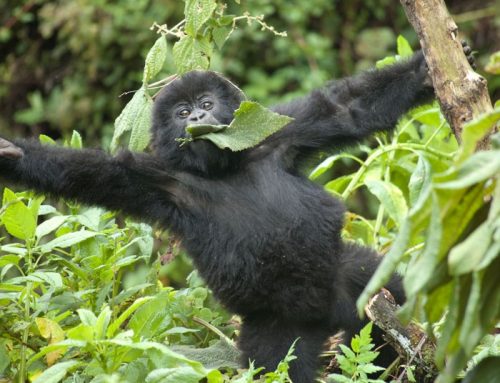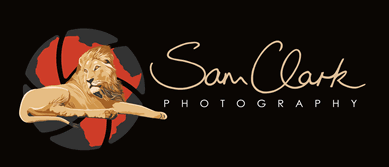Encountering Africa extends to Democratic Republic of Congo for gorilla trekking tours combined with Nyiragongo volcano hiking in Virunga National Park. Mount Nyiragongo is an active strato volcano in the Virunga Mountains associated with the Albertine Rift.
Mount Nyiragongo is located inside Virunga National Park, in the Democratic Republic of the Congo, about 20 km north of the town of Goma and Lake Kivu. It is one of the most active volcanoes in Africa, and one of eight volcanoes in the Virunga Mountains. The main crater is about 2 km wide and usually contains a lava lake which appears in the summit crater. Mount Nyiragongo has erupted three times that is in 1977, 1994 and lastly in 2002.
During this eruption lava flows moved through the city of Goma on the shores of Lake Kivu destroying 13% of the city and displaced hundreds of thousands of people flows entered Lake Kivu.
The Democratic Republic of Congo tends to experience two seasons, the dry and wet seasons therefore the best time to visit the Nyiragongo volcano is all year round but keep in mind there is unpredictable weather changes such as regular rains during certain months of the year because Nyiragongo is in the middle of equatorial rain forests. In mid-March to May and as well as November tends to be a rainy season, the dry season however begins in June – October and also December.
The climb up Nyiragongo takes approximately 6 to 7 hours including the stopovers and breaks in humid and rough conditions, save for the trail is reasonably simple and not extremely steep; expecting to see rare species of birds and animals such as monkeys, bush bucks and chimpanzees alongside the track and the sight whilst you arrive at the apex, is eye-catching.
Climbing Mount Nyiragongo needs you to wake up early in the morning and transfer to the Rwanda/Congo border post, you will cross into the Democratic Republic of Congo and drive on towards the Kibati patrol post at the base of Mount Nyiragongo, a mere 50km outside Goma.
After a safety brief and final check of everyone’s packs and equipment you begin the climb towards Mount Nyiragongo summit. The group will be lead and escorted by a set of rangers/guides and a small contingent of porters.
For the first two hours of the walk you will traverse a lush pristine forest, where towering trees offer a welcome shelter from the sun until you emerge from the forest onto a small plateau with commanding views that stretch towards the infinite horizon, with Lake Kivu, Bukavu, Rwanda and Burundi at your feet. You are now standing on the lava flow remnants of Mount Nyiragongo 2002 eruption. You will reach Mount Nyiragongo crater and your overnight cabins.
In the dark of the night one is able to appreciate better the dark crusty surface of lava, spliced and splitting into ever changing plates. As the plates separate, bright orange lava fill the cracks and a fantastic spider-web pattern emerges. Every now and then fountains of lava flare up disrupting these pretty patterns, but adding a surge of dynamism and power to this spectacular sight, as you enjoy this this magical experience by taking pictures and videos living memories behind.
The two days of Nyiragongo hiking are demanding. The most tiresome element is volcanic rocks that wobble under your feet but there is also the sheer distance and altitude factor. The good news is that you will not be in hurry. The trek is timed in a way that allows even a slow person to make it. You might take 7 hours instead of 4 but you will reach the crater and then have a night of rest before the descent. Your legs may hurt for some days afterwards but you will be fine.
Accommodation at the top of Mount Nyiragongo is inside smallish triangular tents that are pitched inside rough a-frame buildings, some with doors, most without. The tents aren’t huge and you’ll be in close quarters with your tent buddy, especially since some of them seem to be built on a slight angle which means you’ll roll into them which is great for keeping warm. Visitors hiking to the summit have the option of hiring a cook and/or porters to carry their bags up the mountain, being on a budget we elected to carry our own bags and some food for the night up the mountain.
The next day you go for Gorilla trekking adventure which commences early in the morning where your will be driven up to the gorilla trekking starting point at Bukima patrol station in the mountains of the Virunga National Park, outside the city of Goma. The small agrarian villages you’ll pass, and the people who run to the road to wave at you, will give you a glimpse of a different way of life.
They all set off at 8:30am and usually return by midday. Depending on where the great apes are, tracking can be easy or strenuous. Gorilla movements are followed daily, so unsuccessful tracking is almost unheard of. Half of the fee would be returned in such an unlikely case. All treks are led by park rangers and usually depart from Bukima patrol post.
Treks usually require from 2-8 hours of hiking in each direction, depending where the mountain gorillas spent the previous night and the difficulty of the terrain. By following these rules and through the purchase of the permit, you are contributing to the conservation of the mountain gorilla and the local people. The funds generated from the sale of this permit are used for the management of the National Parks. A percentage of the funds raised from Park entrance fees are also donated to local communities living adjacent to the parks to contribute to their development and improve natural resource management in the region.



Leave A Comment